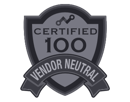sales analytics
CEOs: Are your sales people systematically outselling the competition?
“It is not the strongest species that survives, nor the most intelligent. It is the one that is most adaptable to change.”
This quote rings true in our competitive market economy. Over the last few decades, we’ve seen impressive improvements in efficiency and quality when it comes to production and other business processes. But how much has your sales process evolved and improved?
Why does leadership accept a 41.9% failure rate in sales?
In CSO Insight’s study “Sales Performance Optimization - 2015 Key Trends Analysis,” there are alarming data showing that sales effectiveness, despite picking up after the financial crisis of 2008, has actually fallen since 2012.
Gartner: "Boost your sales win rates by 50% via win-loss analysis"
Most sales organisations claim to conduct some form of win-loss analysis. But according to a recent Gartner investigation, no more than a third conduct them with the proper degree of rigour.
How to shorten the sales cycle?
I recently wrote about the five most important KPIs when tracking a sales pipeline. One question that keeps coming up in discussions with sales managers is how to shorten the sales cycle.
Sales metrics - 5 KPIs you must track
To improve your sales team’s efforts, you need to keep an eye on your key performance indicators (KPIs). At a first glance, measuring sales appears very simple – just look at the results, right? While it’s true that the achieved business result is easy to measure, the difficulty lies in knowing how we got there and how to improve moving forward.
How much could we sell for if we organized sales efforts better? Are we leaving money on the table? Which levers can we pull?
A realistic approach to goal setting in b2b sales
Let’s start with a statistic: quota attainment in B2B sales is currently around 60%. Unfortunately, this is nothing new. On the contrary, it has been status quo for the last number of years. Yet despite the 40% failure rate, we continue with the same quota expectations and the same goal setting practices year after year after year - somehow expecting a different result. How about trying something different in 2015?
External Exposure
Podcasts
- Tony Morris interviews George Brontén on the podcast "Confessions of a serial seller"
- Deadly Assumptions that are Killing your B2B Sales - Outside Sales Talk with George Brontén
- SaaS-Story in the Making: Designing a Buyer-focused Sales Process - with George Brontén
- Tibor Shanto, Sales Scrum, interviews George Brontén
- Andy Paul, Sales Enablement: Stop Killing Deals, with George Brontén
- Jonathan Farrington interviews George Brontén about Stop Killing Deals [the book]
- Sales Futurists: The Future of Professional Selling - What Will the New "Normal" Be Like?
- Sales Pipeline Radio: You’re Killing Sales Deals Without Knowing It: George Will Help You Fix It
- Penta Marketing Interviews George Bronten in the Podcast Emerging Stronger™
- Integrity Solutions: Unmasking and defeating deadly assumptions that plague sales organizations
Videos & interviews
- The Top 5 Ways You are Killing Your Sales - Brutal Truth Sales Podcast
- Phil Gerbyshak interviews George Brontén about the Stop Killing Deals book release
- Membrain's Founding Story
- Sales Tools - the Good, the Bad, and the Ugly
- Here's what to consider when adding or switching your CRM
- Productivity, efficiency, effectiveness – what’s what and where to focus?
- How to Build a Sales Process That Drives Successful Behaviors
- Can Checklists Stop Deals from Dying and Help Consistently Achieve Quota?
Guest Posts
- G2Crowd: "How to Get the Most out of Your Sales Technology Investment"
- Saleslounge: Varför dina stjärnsäljare blir dåliga säljchefer
- Saleslounge: Vad är komplex försäljning?
- Vainu: Så blir du en mästare på komplex B2B-försäljning
- CSO Insights: Sales Process Interview, Part 2
- CSO Insights: Sales Process Interview, Part 1
- Richardson: 3 Pitfalls that Still Make Sales Teams Waste Time and Lower Sales Effectiveness
- Smart Selling Tools: How to Stop Fighting the Monster of Sales Technology Complexity









